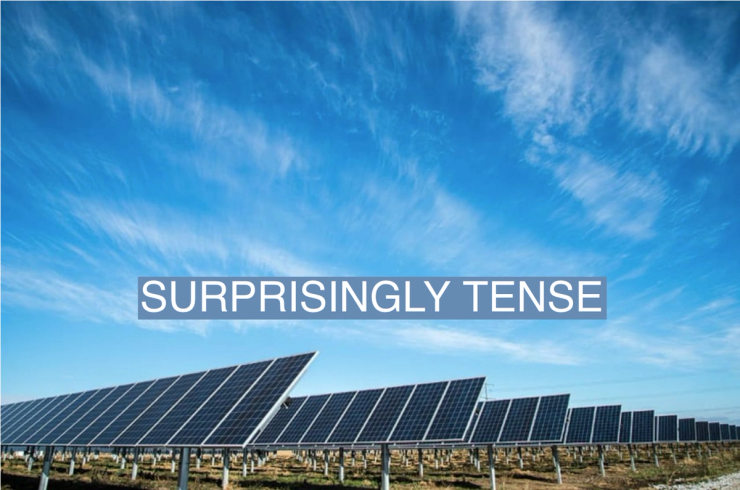The News
A surprisingly common headline across the West is a variation on “Environmentalists Oppose New Solar Farm.” Recent examples from the U.K. include a local Green Party politician speaking out against a huge new solar installation; another saying: “Obviously, the Green Party is in favour of increasing the supply of renewable energy. However…“; and a third complaining that a major new solar development will harm local wildlife, “such as badgers, foxes and hedgehogs.”
In France, green campaigners clash with police over plans to construct water reservoirs, intended to help farmers deal with droughts brought on by climate change, and oppose a lithium mine which will provide crucial raw materials for green tech such as electric vehicles. In the United States, renewable energy projects must clear a series of environmental regulatory hurdles, some of which are now used to block more solar and wind projects than oil and gas ones. In Norway, Greta Thunberg was among environmental and Indigenous rights activists campaigning to block a wind farm.
These clashes are not an accident. They point to an underlying tension within environmentalism. The things that feel environmentally sound — things like preserving local wildlife or landscapes — are often the exact opposite of what is good for preventing climate change, an unacknowledged trade-off between the local and the global. The green movement needs to acknowledge that sometimes, by defending the local environment, it is damaging the global one.
In this article:
Tom’s view
This tension is relatively new. A few decades ago, an energy project would have likely involved fossil fuels. Blocking it would have reduced local environmental damage, and possibly carbon emissions, too. Whether it would have been beneficial is of course a wider question — abundant energy is a good thing — but environmentally speaking, there would have been little ambiguity.
That’s not as true now. Solar and wind power are extraordinarily cheap and efficient, for example, but have a large territorial footprint: The Brookings Institution estimates that building enough wind and solar power to replace all the non-renewable energy production in the United States would, optimistically speaking, require a land area equivalent to 1.6 Delawares, or in international terms, roughly one Cyprus. Another, less optimistic, study put the figure at one South Dakota — Belarus, to non-Americans — about 20 times larger.
Whichever of those two figures is closer to the truth, the U.S. will have to do the equivalent of paving an entire state with solar panels and wind farms and associated infrastructure, in order to reach a fully zero-carbon energy system. This seems to me (speaking as someone in Britain, with a stake in the climate but not in the preservation of local beauty spots in the U.S.) a good thing to do. But it will involve building things, not leaving nature untouched.
Ironically, the way to minimize this impact would be to vastly increase reliance on nuclear energy, which is also zero carbon, and has a vastly lower land footprint. But that is even less popular with environmentalists, in part because of concerns over the long-term storage of nuclear waste, and in part because of safety fears. These worries are understandable, but nuclear waste storage is a solved problem now, and nuclear is far safer than any fossil fuel.
This tension applies not just to energy projects, but to many other facets of environmentalism. What feels like the ecologically sound thing to do is often not the thing that most reduces carbon emissions. It feels greener to live in the countryside, but city dwellers have far lower-carbon lifestyles because it’s easier for them to walk, take public transit, and cycle. Building more homes in cities doesn’t feel green, but it absolutely is. Major new rail projects don’t feel like environmental projects, but they shift cargo and passenger transport away from cars, and reduce carbon. Opening huge lithium and cobalt mines doesn’t feel very green, but if we want electric vehicles and battery storage, we need the raw materials.
Room for Disagreement
Environmental groups could make several responses to this. One would be that a lot of the NIMBY groups using environmental regulations to block wind and solar developments in the U.S. are astroturfed, funded by oil and gas companies as a way to stifle competition. That is no doubt true of some, although a lot of committed lifelong environmentalists — see the U.K. Green Party — really do block green projects.
But the fairest objection would be that, sometimes, preserving local wildlife or beautiful landscapes genuinely should be more important than building green infrastructure. If someone wanted to build a huge offshore wind farm on top of the Great Barrier Reef, that would be bad. In Flagship recently, we reported on calls to permit more deep-sea mining for lithium, manganese, and other vital minerals. No doubt that would make building renewable energy and batteries easier, but perhaps it would come at such high cost to delicate undersea ecosystems that it wouldn’t be worth it.
The starting point, though, is acknowledging that tradeoff. If we want a zero-carbon world, and we do, it involves building stuff, not blocking it. For some in the environmental movement, their first reaction is — understandably, given their history, but still regrettably — to block stuff.
Notable
- Britain Remade, a U.K. think tank, points out that an environmental impact assessment of a particular offshore wind farm was more than 100 pages longer than the complete works of Tolstoy. The organization is pushing for sweeping reforms of the country’s planning regime in order to speed up infrastructure and energy projects, and argues that changes could boost Britain’s economy, reduce its carbon emissions, and reduce reliance on unstable petrostates.
- When you take into account both land use and carbon emissions, nuclear power is the least environmentally damaging source of electricity, a new study said. The research by scientists at the Norwegian University of Science and Technology found that nuclear power takes around a hundred times less land per kilowatt-hour produced than solar does in most of the world.


